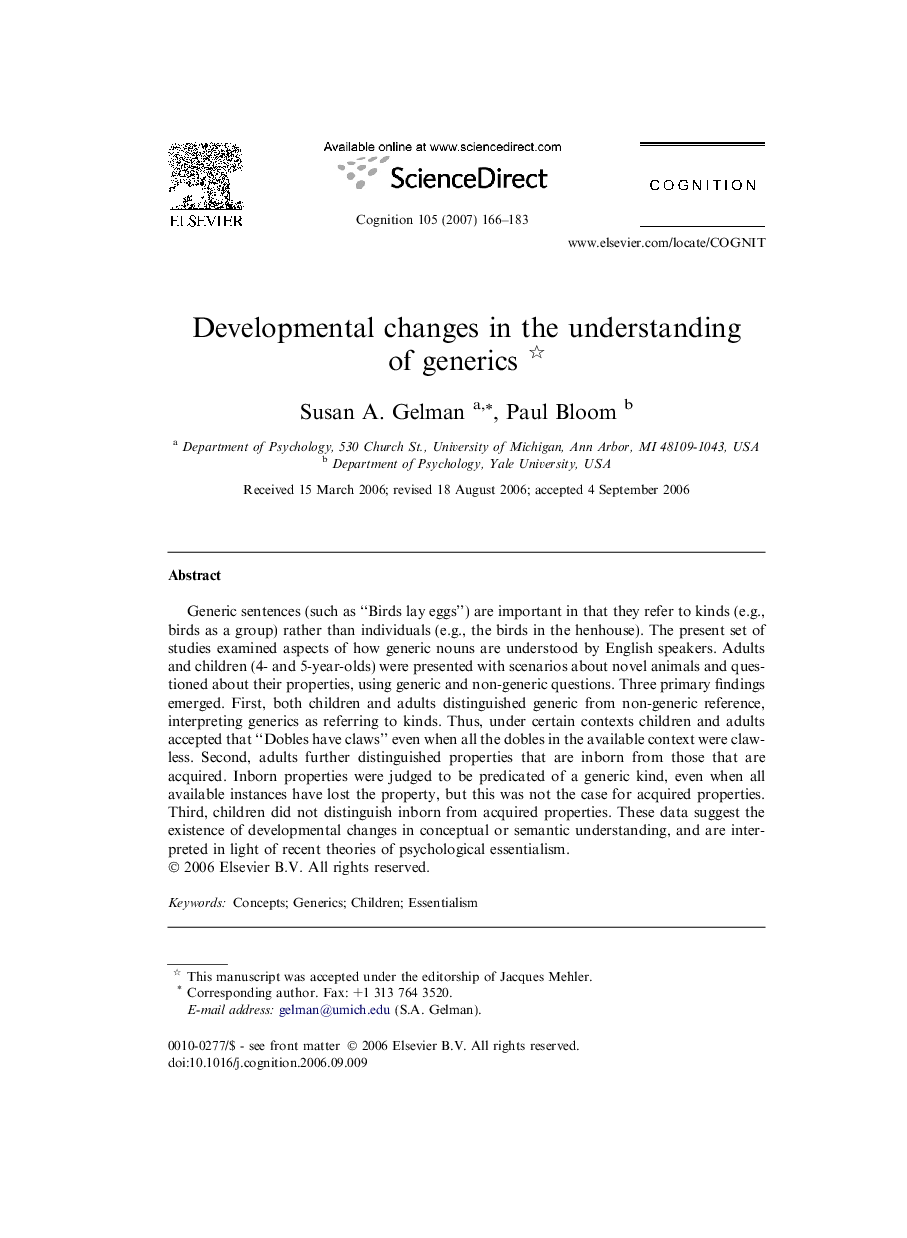| Article ID | Journal | Published Year | Pages | File Type |
|---|---|---|---|---|
| 926842 | Cognition | 2007 | 18 Pages |
Generic sentences (such as “Birds lay eggs”) are important in that they refer to kinds (e.g., birds as a group) rather than individuals (e.g., the birds in the henhouse). The present set of studies examined aspects of how generic nouns are understood by English speakers. Adults and children (4- and 5-year-olds) were presented with scenarios about novel animals and questioned about their properties, using generic and non-generic questions. Three primary findings emerged. First, both children and adults distinguished generic from non-generic reference, interpreting generics as referring to kinds. Thus, under certain contexts children and adults accepted that “Dobles have claws” even when all the dobles in the available context were clawless. Second, adults further distinguished properties that are inborn from those that are acquired. Inborn properties were judged to be predicated of a generic kind, even when all available instances have lost the property, but this was not the case for acquired properties. Third, children did not distinguish inborn from acquired properties. These data suggest the existence of developmental changes in conceptual or semantic understanding, and are interpreted in light of recent theories of psychological essentialism.
